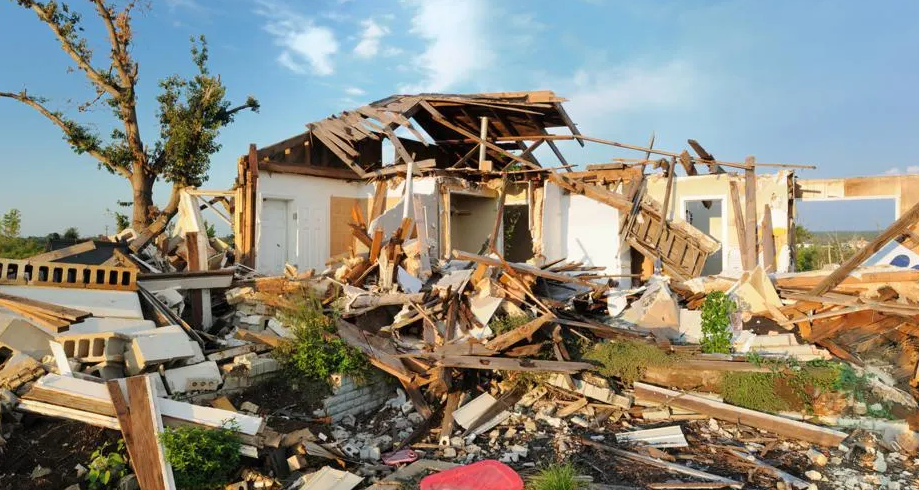Homeowners insurance is designed to protect your property and possessions against a wide range of risks, but not all types of damage are automatically covered. Natural disasters, such as earthquakes, hurricanes, and other catastrophic events, are a major concern for many homeowners, especially those living in disaster-prone regions. While most standard home insurance policies provide coverage for certain natural disasters like windstorms and hail, they often do not cover events like earthquakes and floods, which require separate policies or endorsements.
Understanding how home insurance covers (or doesn’t cover) natural disasters, and knowing what additional coverage options are available, is crucial for ensuring your home is adequately protected. In this article, we will explore how home insurance addresses different types of natural disasters, with a particular focus on earthquakes and hurricanes.
1. Coverage for Earthquakes
Earthquakes are sudden and unpredictable events that can cause significant structural damage to your home. Unfortunately, earthquake damage is typically not covered under standard homeowners insurance policies. This means that if your home suffers damage due to an earthquake, your regular home insurance policy will not help you with the repairs.
Why Earthquakes Are Not Covered Under Standard Home Insurance
Home insurance policies generally exclude earthquake coverage because the risk of an earthquake is considered an “act of nature” that is more severe and catastrophic in its impact than other events like fire or windstorms. As a result, insurers treat earthquake coverage separately and often require homeowners to purchase additional policies or endorsements to cover this type of risk.
How to Get Earthquake Insurance
To protect your home against earthquake damage, you will need to purchase a separate earthquake insurance policy. These policies are specifically designed to cover the costs of repairing or rebuilding your home after an earthquake, as well as replacing damaged personal property. Earthquake insurance typically covers:
- Structural Damage: Repairs to the foundation, walls, roof, and other structural components of the home that may have been damaged during an earthquake.
- Personal Property: Replacement of personal items like furniture, clothing, electronics, and appliances that are damaged due to the earthquake.
- Additional Living Expenses: If your home is rendered uninhabitable due to earthquake damage, your earthquake insurance policy may cover temporary living expenses, such as hotel stays or rental accommodations.
Important Considerations for Earthquake Insurance
- Deductibles: Earthquake insurance often comes with high deductibles—typically ranging from 5% to 15% of the dwelling coverage amount. This means that if your home is worth $300,000 and your policy has a 10% deductible, you would need to pay $30,000 out-of-pocket before the insurance kicks in.
- Coverage Limits: Earthquake insurance may have limits on how much it will pay out for specific types of damage, such as personal property or temporary living expenses. It’s important to review your policy’s limits to ensure they align with your needs.
Alternative Options
In some cases, earthquake coverage can be added as an endorsement or rider to your existing homeowners insurance policy. However, this is not universally available, and in many areas, purchasing a standalone earthquake policy is the best option. If you live in an area with a high risk of earthquakes (such as California or Alaska), it’s especially important to have earthquake insurance.
2. Coverage for Hurricanes
Hurricanes are severe tropical storms that can bring high winds, heavy rain, and flooding to coastal and inland areas. Unlike earthquakes, hurricane damage is typically covered under a standard homeowners insurance policy, but there are important caveats to keep in mind.
How Standard Homeowners Insurance Covers Hurricanes
Most standard homeowners insurance policies provide coverage for damage caused by windstorms, which includes the strong winds associated with hurricanes. However, the level of coverage for hurricanes can vary depending on the location, the insurance provider, and the specifics of the policy. Here’s a breakdown of how home insurance generally covers hurricane-related damage:
- Wind Damage: Most homeowners insurance policies cover damage caused by hurricane-force winds, including the destruction of the roof, windows, doors, and other parts of your home’s exterior. This can also extend to structural damage, such as walls and fences, if wind causes significant destruction.
- Personal Property: If your personal belongings are damaged or destroyed due to hurricane winds (e.g., furniture, electronics, clothing), your home insurance policy will generally cover the replacement costs.
- Additional Living Expenses: If your home becomes uninhabitable after a hurricane, your homeowners insurance may cover additional living expenses (ALE), such as the cost of staying in a hotel or renting a temporary home while repairs are made.
What’s Not Covered: Flooding from Hurricanes
One major area of confusion regarding hurricane coverage is flood damage. While hurricanes can bring heavy rainfall and cause flooding, this type of damage is not covered by standard homeowners insurance policies. Flooding is considered a separate risk, and homeowners must purchase additional flood insurance to be covered.
Flood insurance is available through the National Flood Insurance Program (NFIP) or private insurers. It provides coverage for:
- Structural Damage: Repairs to the foundation, walls, and floors caused by floodwaters.
- Personal Property: Replacing personal items that have been damaged by flooding, such as furniture, electronics, and appliances.
If you live in a hurricane-prone area, especially in flood zones, it is highly recommended that you add flood insurance to your home insurance policy.
Windstorm Deductibles and Hurricanes
In some regions where hurricanes are common, insurers may require a hurricane or windstorm deductible. This is a separate deductible from your standard homeowners insurance deductible and is applied specifically to damages caused by windstorms, including hurricanes. These deductibles are often higher than regular deductibles, typically ranging from 1% to 5% of the home’s value.
For example, if your home is valued at $200,000 and you have a 2% windstorm deductible, you would be responsible for paying $4,000 out-of-pocket before your insurance policy covers any of the damage caused by hurricane winds.
3. How to Prepare for Natural Disasters
Regardless of the specific natural disaster, being prepared can help reduce the risk of damage and ensure you’re financially protected when a disaster strikes. Here are a few steps you can take to prepare:
- Review Your Insurance Policy: Make sure you fully understand what’s covered and what’s excluded under your homeowners insurance policy. Verify whether earthquake or flood insurance is necessary, depending on your location.
- Increase Coverage if Needed: If you live in an area that’s prone to earthquakes, hurricanes, or other natural disasters, consider increasing your coverage limits or adding endorsements to your policy to ensure adequate protection.
- Create an Emergency Kit: Having an emergency kit with essentials like water, food, flashlights, and batteries can help you during a natural disaster.
- Strengthen Your Home: Take preventive measures to protect your home, such as reinforcing the roof, windows, and doors to withstand wind damage, or installing sump pumps and waterproofing to protect against flooding.
Conclusion
Natural disasters like earthquakes and hurricanes can have devastating effects on your home and personal property. While standard homeowners insurance provides coverage for certain types of damage, such as windstorms caused by hurricanes, it does not cover damage from earthquakes or flooding, which are typically excluded. To ensure you are fully protected, it’s essential to purchase additional coverage, such as earthquake or flood insurance, if you live in areas prone to these risks.
By understanding the limits of your coverage and taking steps to add necessary policies or endorsements, you can ensure that you are adequately protected when disaster strikes. Always review your home insurance policy regularly, and don’t hesitate to reach out to your insurance provider to make any necessary adjustments based on your location and risks.







